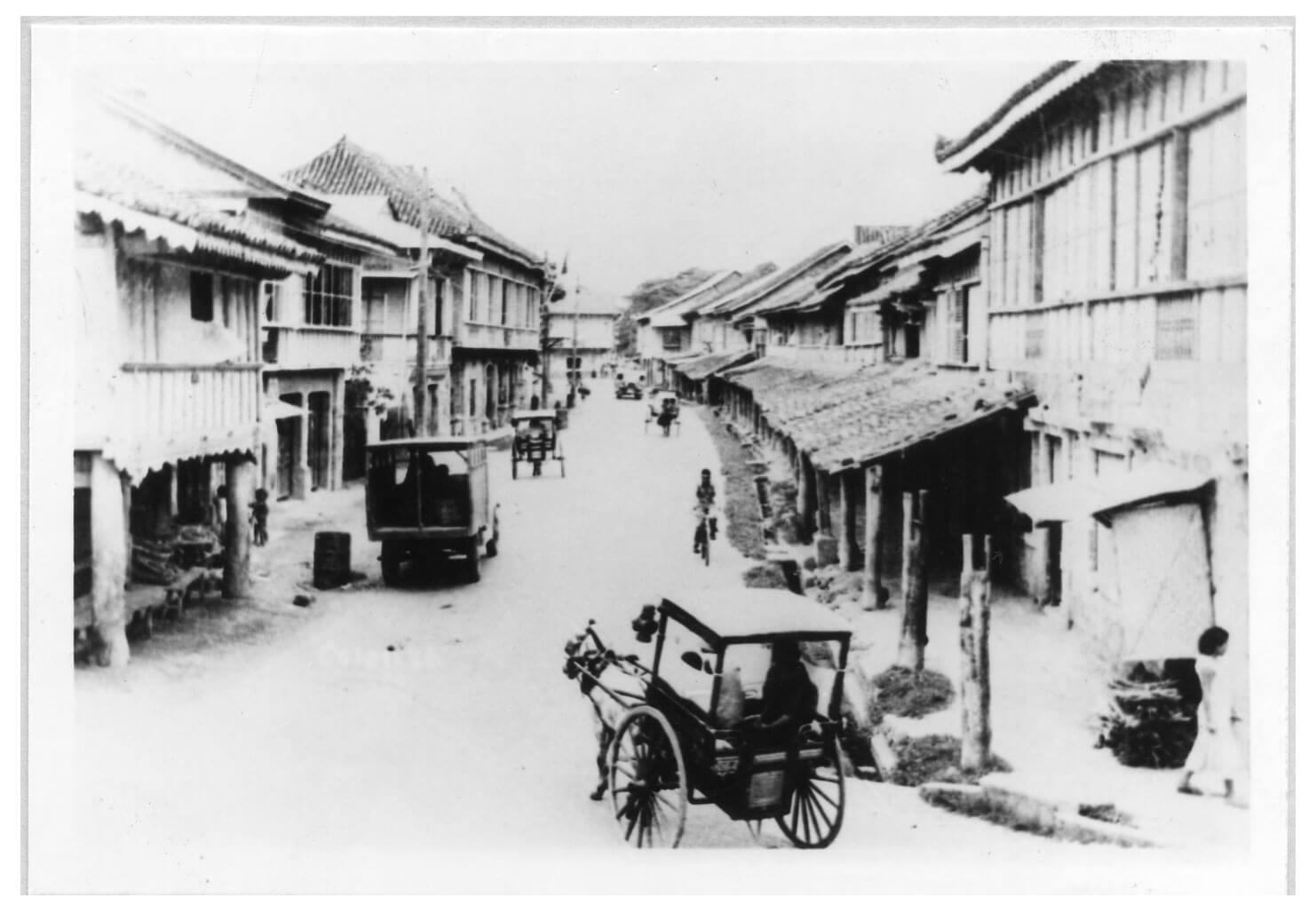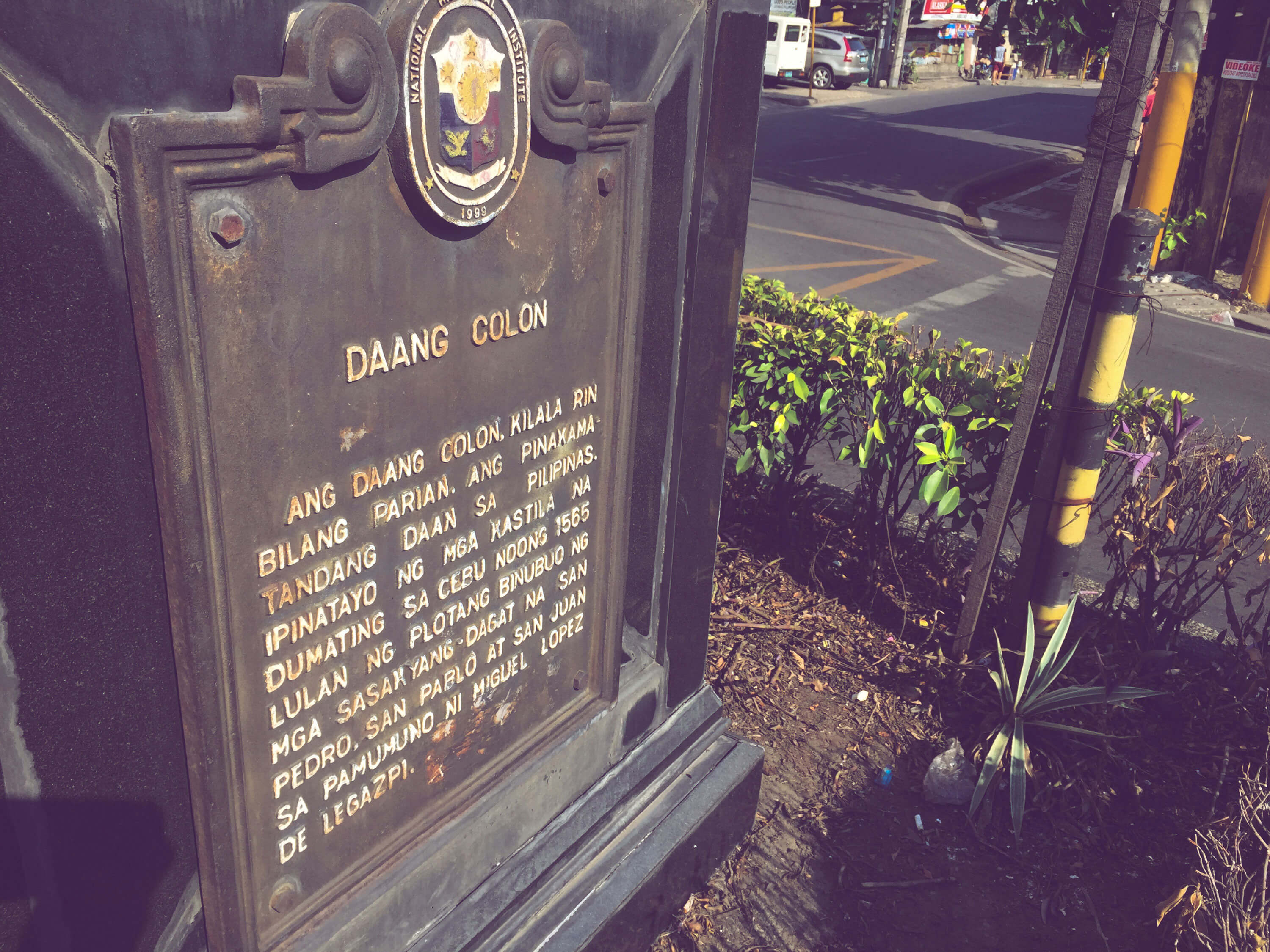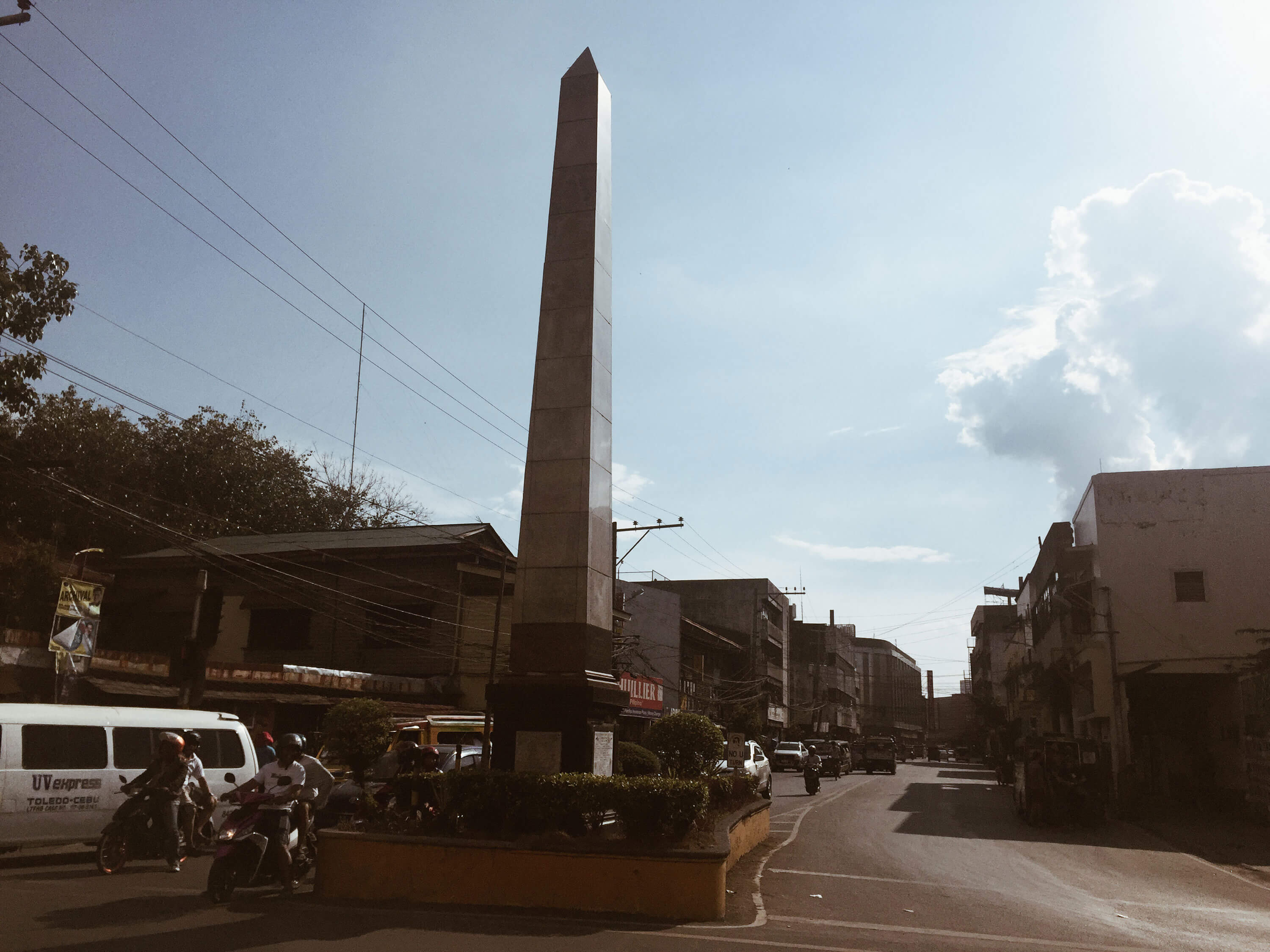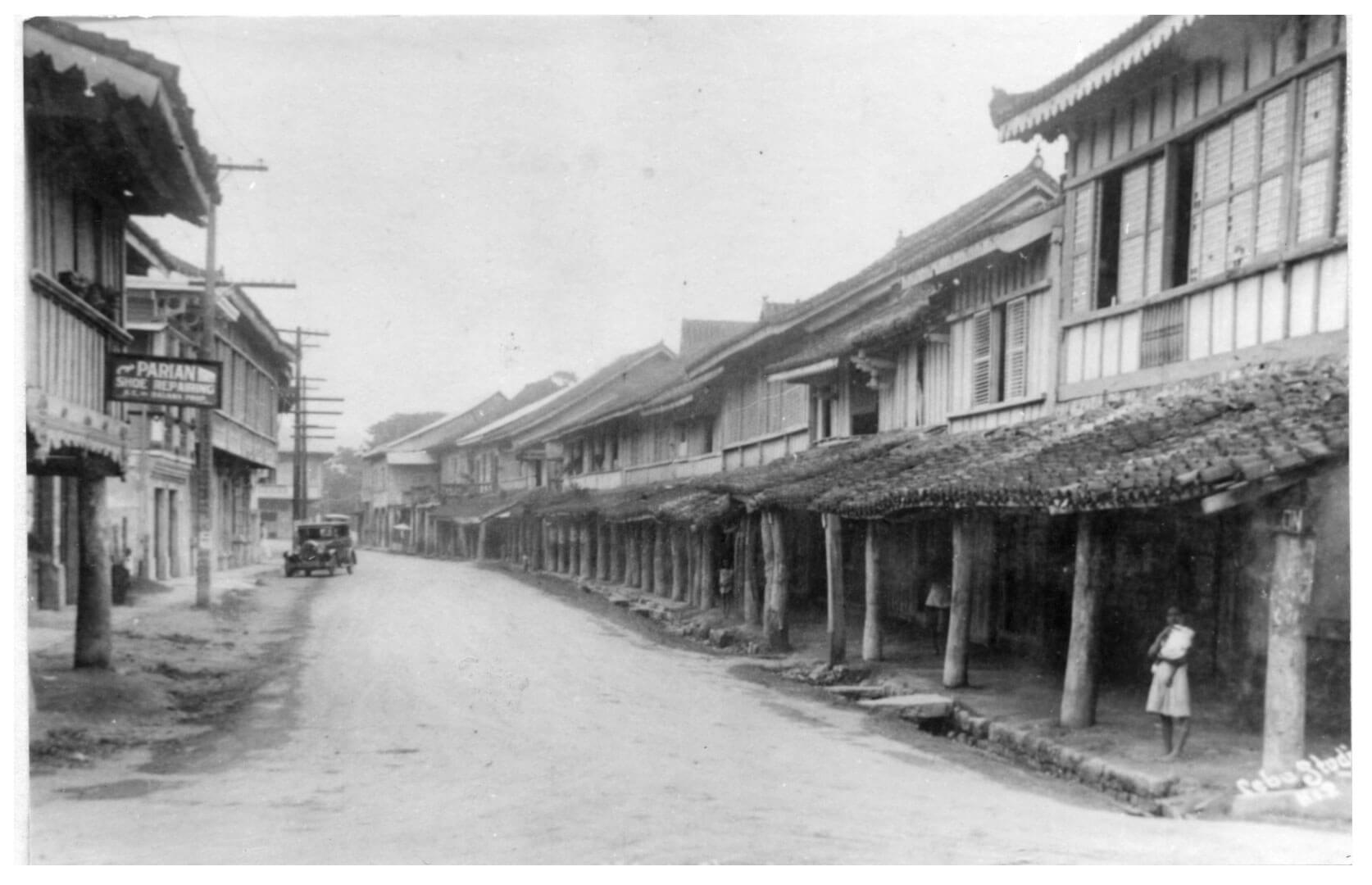No, writes Dr. Resil Mojares in Integracion/Internacion: The Urbanization of Cebu in Archival Records of the Spanish Colonial Period.
There were already streets even before the Spaniards came to the Philippines, Mojares asserts in the book’s opening chapter Calle Colon and the Sites of Public Memory.
“In a commonsensical way, one can say that where a sufficient number of people pass, a street is made,” explains Mojares, a National Artist for Literature.
“But even when one requires that some premeditated design, apart from being trodden, is what makes a path a street, it can be assumed that there were already streets in the country’s populous centers when the Spaniards first came,” he says.

OLD COLON. This archival photo shows the corner of Mabini and Colon streets. This is the point of view were you to stand across the obelisk that stands on Colon. According to the text that accompanied this photograph at the Cebuano Studies Center of the University of San Carlos, the building at the end of the road used to Hijos del Pueblo. It is where the present-day Gaisano Main is located.
Historical marker
The historical marker installed by the National Historical Commission of the Philippines on the obelisk on Colon Street proclaims it as the oldest in the country.
“Colon St., known also as Parian, is the oldest street in the Philippines. It was built by the Spaniards who arrived in Cebu in 1565 on the fleet composed of the vessels San Pedro, San Pablo and San Juan under the command of Miguel Lopez de Legazpi,” says the marker published in English, Filipino, and Cebuano. (Emphasis mine.)
It is the only street in the country recognized as a national historical landmark, Mojares writes. What may be distinct, Mojares writes, is “Spanish colonial urbanism” and the deliberate planning of the settlement.

HISTORICAL MARKER. Three markers proclaim in English, Filipino, and Cebuano that Colon is indeed the oldest street in the Philippines.
The street was known as Calle del Parian before it was named after Christopher Columbus or Cristobal Colon.
Colon is a short street, Mojares writes, extending from the corner of present day D. Jakosalem Street to the Mabini deadend (see photos).
Postcards, books
Present day Colon, especially the area of the old Calle Parian, is dirty and stinky. It’s strewn with litter, including cigarette butts and plastic wrappers. It’s not an area that Cebu City can proudly show off to tourists.
The book traces popularization of the claim to postcards and school books published at the turn of the 20th century. Among the first post cards was one published in 1910 by American Bazar labeled “oldest street in Cebu.” It used a photograph taken by a discharged American soldier who put up a photo studio in Cebu, the book said.

PRESENT DAY. Colon from the point of view of where the old photographs show the old street to be.
In 1914, William Boyce, a publisher from Chicago, wrote about the “many reminders of the earliest Spanish days in Cebu. Colon with its tiles and arcades, is the oldest street in the Philippines.” His book printed a photo of Colon with the caption “Calle Colon, Cebu, the oldest street in the Philippines.” (Emphasis mine.)
Mojares said that after Boyce, travelers would subsequently refer to Colon as the oldest street in the country.
That Colon became “an icon of Spanish colonial urbanism,” a fame founded on error, provides “fine irony,” writes Mojares. It lies outside the intramuros of Spanish settlement envisioned by Legazpi, in the periphery where the Chinese and Chinese-mestizos lived.
“The case of Colon suggests that urbanism is not the pure product of Legazpi’s mental map of what a civilized settlement should be,” Mojares writes. Colon is what “Cebuanos made it to be.”

OLD COLON. According to the information card that came with the photo, the presence of wires strung on the electric poles indicated that the power plant of Albert Bryan and RR. Landon was in operation. Their company is the forerunner of the current utility Visayan Electric Company Inc. or VECO.
